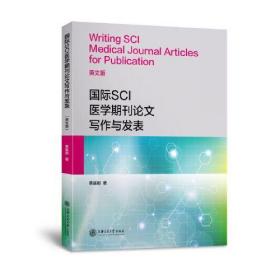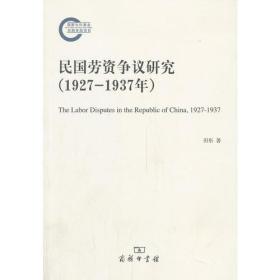
国际SCI医学期刊论文写作与发表(英文版)
¥ 55.18 9.2折 ¥ 59.8 九五品
仅1件
河北廊坊
认证卖家担保交易快速发货售后保障
作者蔡基刚
出版社上海交通大学出版社
出版时间2021-12
版次1
装帧平装
货号A8
上书时间2024-12-02
- 在售商品 暂无
- 平均发货时间 12小时
- 好评率 暂无
- 最新上架
商品详情
- 品相描述:九五品
图书标准信息
- 作者 蔡基刚
- 出版社 上海交通大学出版社
- 出版时间 2021-12
- 版次 1
- ISBN 9787313255105
- 定价 59.80元
- 装帧 平装
- 开本 16开
- 纸张 胶版纸
- 【内容简介】
- 新冠病毒爆发后,医学本科生和研究生大规模扩招,各高校更加重视医学国际期刊论文的读写,以尽快汲取信息,开展研究。本教程采用语类分析、语域分析、元话语、脚手架等理论,用显性教学法帮助学生和学者进行医学国际期刊论文写作和专业学位论文写作。本书共10个单元,分别从如何快速汲取科技论文的主要信息,如何撰写引言部分和文献回顾,如何收集数据和设计方法,如何通过文字和图表有效呈现结果,如何通过对发现的解释和与类似研究的对比突出研究价值,如何开展批判性思辨分析发现论文的问题,如何撰写论文摘要标题和参考文献,以及如何发表投稿等方面展开讨论。本书设计80多个练习任务表格,旨在用显性的语言教学法让学习者在几十个学时里掌握医学英语论文写作方法,而不是通过数年的模仿后习得。本书适合高校医学院本科生和研究生使用,也适合医学科研人员使用。
- 【目录】
-
CHAPTER 1 Getting Started with Writing a Research Article
1.1 Characteristics of MRAs /
1.2 Deciding on a topic and a problem to be addressed /
1.3 Using databases for references /
1.4 The macrostructure of medical articles /
1.5 Reading titles for prediction /
1.6 Reading abstracts for main ideas /
1.7 Reading the key sentences in the Introduction and Discussion sections /
1.8 Writing a proposal /
CHAPTER 2 The Introduction Section
2.1 The elements of an Introduction section /
2.2 Writing the initial sentences to claim centrality /
2.3 Literature reviews /
2.4 Indicating the gap to be filled /
2.5 Expressing the objective/purpose /
2.6 Postulating a hypothesis /
2.7 Introducing the methods and structure of the article /
2.8 Tenses used in the Introduction /
2.9 Signal words and cohesive devices /
2.10 Fixed expressions for centrality, gaps and purposes /
2.11 Reusing language in the Introduction /
CHAPTER 3 Intext Citation
3.1 Citation function /
3.2 Citation types /
3.3 Citation methods /
3.4 Citation and synthesizing the sources /
3.5 Citations and reporting verbs /
3.6 Verb tenses in citation /
3.7 Citation and attitude markers /
CHAPTER 4 The Methods Section
4.1 The format of a Methods section /
4.2 The moves of the Methods section /
4.3 Study design /
4.4 Data and samples /
4.5 Procedures /
4.6 Study outcomes and measures /
4.7 Research variables /
4.8 Statistical analysis /
4.9 Signal words for the method purposes /
4.10 Citations in the Methods section /
4.11 Active or Passive verbs /
4.12 Selfmention /
4.13 Tenses in the Methods section /
CHAPTER 5 The Results Section
5.1 The significance of the Results sections /
5.2 The choice of the data to report /
5.3 The content of a Results section /
5.4 Reporting the results of data collection /
5.5 Locating tables and figures /
5.6 Stating general findings /
5.7 Providing specific evidence /
5.8 Evaluating and interpreting the data /
5.9 The organization of the results /
5.10 Graphical representations /
5.11 Choosing tables and figures /
5.12 Writing table/figure titles and figure legends /
5.13 Verb tenses /
5.14 Attitude markers /
5.15 Fixed expressions used in the Results section /
CHAPTER 6 The Discussion Section
6.1 Writing a Discussion section /
6.2 The moves of a Discussion section /
6.3 The role of comparison in the Discussion section /
6.4 Explanation and interpretation /
6.5 Limitations and further research /
6.6 Implications /
6.7 Conclusion /
6.8 Citations in the Discussion section /
6.9 Hedges and boosters /
6.10 Attitude statements /
6.11 Verb tenses in the Discussion section /
6.12 Fixed expressions used in the Discussion and Conclusion /
CHAPTER 7 Critical Thinking and Conclusion
7.1 Critical thinking /
7.2 Conclusion, claims and arguments /
7.3 Conclusions and relevance /
7.4 Primary and secondary evidence /
7.5 Statistical evidence and sufficiency /
7.6 Personal experience and observations /
7.7 Secondary evidence /
7.8 Logic reasoning /
7.9 Explanations /
CHAPTER 8 The Abstracts and Titles
8.1 Abstracts /
8.2 Verb tenses and selfmention in the Abstract /
8.3 Fixed expression used in the Abstract /
8.4 Research in Context /
8.5 Titles /
8.6 Keywords /
8.7 Contributors, Acknowledgements and others /
8.8 Referencing styles and systems /
8.9 Footnotes, endnotes and supplementary information /
CHAPTER 9 Language and Style
9.1 Style of scientific writing /
9.2 The use of nominalization /
9.3 Noun clusters /
9.4 There be and it be Ved that /
9.5 Passive constructions /
9.6 Subordinate structure /
9.7 Modifier phrases /
9.8 Lexical sophistication and variation /
9.9 Sentence variation /
9.10 Paragraphs /
9.11 Using corpus analysis /
9.12 Selfconstructed corpora /
CHAPTER 10 Publication Process
10.1 Getting the paper published /
10.2 Understanding referees criteria /
10.3 Choosing an appropriate target journal /
10.4 Understanding the submission guidelines of a journal /
10.5 Writing a cover letter /
10.6 Responding to the editors/peer reviewers /
10.7 Writing a response letter /
Appendix 1: Course syllabus
Appendix 2: Course schedule (16 weeks, 32 or 64 teaching hours)
Appendix 3: Example articles (EAs)
References
List of Tables
Table 1.1 Characteristics of RAs and students theses/dissertations / 002
Table 1.2 The problem to be addressed in my article / 003
Table 1.3 Medical Search Engines / 004
Table 1.4 The content of each section of a research article / 005
Table 1.5 Basic moves of a MRA / 005
Table 1.6 Moves/steps and their corresponding linguistic features / 006
Table 1.7 My SAs General information check / 007
Table 1.8 Titles information / 008
Table 1.9 Title elements in the selected articles / 009
Table 2.1 Threemove schema for article introductions / 016
Table 2.2 Moves of an Introduction section / 016
Table 2.3 Questions to be answered in the Introduction section / 017
Table 2.4 Patterns of centrality claims in the Introduction section / 020
Table 2.5 Critical reading questions / 024
Table 2.6 Signal words for the gap / 028
Table 2.7 Literature review and research gaps / 029
Table 2.8 Literature review information in selected articles / 030
Table 2.9 Tenses used in the Introduction section / 038
Table 2.10 The tenses/verbs used in expressing the objective and methods / 039
Table 2.11 Transitional words in the Introduction / 040
Table 2.12 Classifications for the expression of centrality claims, gaps and purposes / 042
Table 2.13 Check of discursive, rhetorical and linguistic features in the Introduction / 046
Table 3.1 Citations functions in research articles / 047
Table 3.2 Citation functions in the Introduction section / 048
Table 3.3 The frequency of citations (%) in different disciplines based on a corpus of 80 articles / 050
Table 3.4 Citation types / 052
Table 3.5 Citation types (%) in eight disciplines based on a corpus of 80 articles / 053
Table 3.6 Types of citation check / 053
Table 3.7 Citation methods / 054
Table 3.8 The percentage of the citation methods in different disciplines / 061
Table 3.9 Check of citation methods / 061
Table 3.10 Functions of Reporting verbs / 062
Table 3.11 Attitudes of Reporting verbs / 062
Table 3.12 Reporting verbs used in different disciplines (Hyland, 1999) / 063
Table 3.13 Collocation of reporting verbs / 063
Table 3.14 Types of reporting verbs in different sections / 063
Table 3.15 Verb tenses in the literature review citation / 064
Table 3.16 Verb tenses in the subordinate clause of the authorfocused citation / 065
Table 3.17 Reporting verb tenses in the literature review / 066
Table 3.18 Meaning of stance nouns / 067
Table 3.19 Patterns of stance nouns / 067
Table 3.20 Classification of stance or signaling nouns / 067
Table 3.21 Evaluative adjectives and adverbs / 068
Table 3.22 Attitude markers in the articles / 069
Table 3.23 Comprehensive check of citation / 069
Table 4.1 Structure of the Methods section / 072
Table 4.2 Moves of the Methods section / 072
Table 4.3 Elements in the methods section for retrospective and prospective studies. (adapted from Ecarnot et al. 2015: 576) / 073
Table 4.4 The elements of the study design / 079
Table 4.5 Elements of subsection of data and samples / 081
Table 4.6 The content of statistical analysis / 091
Table 4.7 Signal words for the method purposes / 093
Table 4.8 Citation functions in the Methods section / 093
Table 4.9 Citation function check in the Methods section / 094
Table 4.10 Selfmention in different sections / 097
Table 4.11 Semantic reference of “we” in relation to discourse functions (Kuo, 1999: 130) / 097
Table 4.12 The ratio of passive voice and “we” structures / 099
Table 4.13 the ratio of passive voice and “we” structure in research articles / 099
Table 4.14 Verb tenses in the Methods section / 100
Table 4.15 Verb tense check in the Methods section / 101
Table 4.16 Check the discursive, rhetorical and linguistic features in the Methods section. / 101
Table 5.1 Moves of the Results section / 107
Table 5.2 Elements of the subsection of patients / 113
Table 5.3 Table/figure location types / 113
Table 5.4 Patterns of location statements / 114
Table 5.5 Patterns to report the results / 116
Table 5.6 Organization patterns of results / 122
Table 5.7 Element check of Results sections / 124
Table 5.8 Functions of tables and figures / 128
Table 5.9 Functions of different types of figures / 128
Table 5.10 Data presentation information check / 136
Table 5.11 Verb tenses in the Results section / 136
Table 5.12 Reporting verbs, evaluative adjectives and adverbs in the Results sections / 138
Table 5.13 Check of discursive, rhetorical and linguistic features in the Results section / 141
Table 6.1 Discussion section structure check / 143
Table 6.2 Moves of the Discussion section / 144
Table 6.3 Signal words in the comparison / 152
Table 6.4 Explanation elements / 155
Table 6.5 The elements of limitations in the Discussion section / 161
Table 6.6 Content of the Conclusion / 164
Table 6.7 Citation functions in Discussion section / 165
Table 6.8 Citation check in the Discussion section / 168
Table 6.9 hedges and boosters / 168
Table 6.10 Hedges and boosters in academic articles (Hyland, 1998) / 169
Table 6.11 Disciplinary differences (Hyland, 1998) / 169
Table 6.12 Hedges in the Discussion / 169
Table 6.13 Hedges and boosters check in different sections / 172
Table 6.14 Patterns of attitude statements / 173
Table 6.15 Verb tenses and modal auxiliaries used in the Discussion section / 173
Table 6.16 Comprehensive information check of the discussion section / 178
Table 6.17 Check of discursive, rhetorical and linguistic features of the Discussion section / 179
Table 7.1 the premise and conclusion indicators / 183
Table 7.2 Approximate statistically significant d s at. 05 level (Moor and Parker, 2009: 280) / 188
Table 7.3 Approximate error margins for random samples of various sizes (Moor and Parker, 2009: 241) / 189
Table 8.1 Abstract moves / 202
Table 8.2 Verb tenses in the abstracts / 207
Table 8.3 Check of discursive, rhetorical and linguistic features of the Abstract / 212
Table 8.4 Moves of Research in Context / 214
Table 8.5 Elements to be included in a title / 216
Table 8.6 Syntactic patterns of MRA titles / 217
Table 8.7 Referencing systems / 224
Table 9.1 Linguistic features of formal and informal registers / 227
Table 9.2 Four dimensions from the factor analysis of the biology corpus (Biber et al., 2007: 180) / 228
Table 9.3 Features of research writing / 229
Table 9.4 Good and bad writing / 230
Table 9.5 Types of nominalization / 231
Table 9.6 Patterns of nominalization / 232
Table 9.7 Patterns of noun clusters / 234
Table 9.8 Disciplinespecific noun clusters / 237
Table 9.9 Patterns of impersonal structures / 237
Table 9.10 Impersonal style check / 240
Table 9.11 Modifier nouns / 243
Table 9.12 Modifier noun check / 245
Table 9.13 Types of synonyms in academic writing / 245
Table 9.14 Types of words used in different sections / 247
Table 9.15 Purposes of using corpora and concordancing software programs / 253
Table 10.1 Check list for publication / 258
Table 10.2 Frequencies of the language features and metadiscourse markers in IMRD sections / 259
Table 10.3 Verb tenses used in your manuscript / 260
Table 10.4 Evaluation form from journal editors / 260
Table 10.5 Evaluation criteria from referees / 260
Table 10.6 Factors in the choice of potential journals for submission / 262
Table 10.7 Cover letter components / 262
Table 10.8 The reviewers reason for rejection or revision / 264
Table 10.9 Verbs used in revision / 265
点击展开
点击收起
— 没有更多了 —












以下为对购买帮助不大的评价